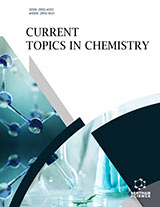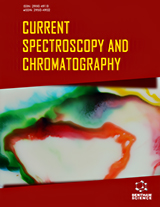Abstract
Background: This study was designed to develop a reliable method for simultaneous quantitation of Citalopram (CIT) and its main active metabolite, Desmethylcitalopram (DCIT), in saliva of patients undergoing treatment with CIT.
Methods: To compare two procedures of saliva purification, Solid-Phase (SPE) and Liquid-Liquid (LLE) extractions, saliva samples obtained from healthy volunteers were spiked with adequate quantities of CIT and DCIT. Different cartridges were used for SPE, while dichloromethane for LLE. Chromatographic separation and quantitation were carried out by UHPLC with DAD detector using a C-18 column and a mixture of acetonitrile and redistilled water (37:63, v:v) with the addition of formic acid (pH 3.5) as a mobile phase.
Results: A comparison of both purification procedures showed that the most satisfactory results were obtained by SPE using Discovery C18 cartridge and redistilled water with formic acid (pH 3.5) as a washing solvent. Dichloromethane proved to be the best extractant in LLE. Both procedures enabled the separation of analytes from human saliva with high precision and recovery.
Conclusions: Validation of the developed UHPLC procedure revealed that, regardless of how the sample was purified, the method was characterized by good linearity (between 10 and 1000 ng/mL), sensitivity, reproducibility, specificity and low values of limits of detection and quantitation. The limits of quantitation were 4.0 and 8.0 ng/mL for SPE and LLE, respectively. The efficiency of the method in therapeutic drug monitoring of CIT and DCIT in saliva of patients was confirmed.
Keywords: Citalopram, desmethylcitalopram, saliva, simultaneous UHPLC quantitation, solid-phase extraction, liquid-liquid extraction.
Graphical Abstract
Current Analytical Chemistry
Title:Simultaneous Quantification of Citalopram and its Main Metabolite, Desmethylcitalopram, in Human Saliva by UHPLC
Volume: 14 Issue: 6
Author(s): Ewelina Dziurkowska and Marek Wesolowski*
Affiliation:
- Department of Analytical Chemistry, Medical University of Gdansk, Gen. J. Hallera 107, 80-416 Gdansk,Poland
Keywords: Citalopram, desmethylcitalopram, saliva, simultaneous UHPLC quantitation, solid-phase extraction, liquid-liquid extraction.
Abstract: Background: This study was designed to develop a reliable method for simultaneous quantitation of Citalopram (CIT) and its main active metabolite, Desmethylcitalopram (DCIT), in saliva of patients undergoing treatment with CIT.
Methods: To compare two procedures of saliva purification, Solid-Phase (SPE) and Liquid-Liquid (LLE) extractions, saliva samples obtained from healthy volunteers were spiked with adequate quantities of CIT and DCIT. Different cartridges were used for SPE, while dichloromethane for LLE. Chromatographic separation and quantitation were carried out by UHPLC with DAD detector using a C-18 column and a mixture of acetonitrile and redistilled water (37:63, v:v) with the addition of formic acid (pH 3.5) as a mobile phase.
Results: A comparison of both purification procedures showed that the most satisfactory results were obtained by SPE using Discovery C18 cartridge and redistilled water with formic acid (pH 3.5) as a washing solvent. Dichloromethane proved to be the best extractant in LLE. Both procedures enabled the separation of analytes from human saliva with high precision and recovery.
Conclusions: Validation of the developed UHPLC procedure revealed that, regardless of how the sample was purified, the method was characterized by good linearity (between 10 and 1000 ng/mL), sensitivity, reproducibility, specificity and low values of limits of detection and quantitation. The limits of quantitation were 4.0 and 8.0 ng/mL for SPE and LLE, respectively. The efficiency of the method in therapeutic drug monitoring of CIT and DCIT in saliva of patients was confirmed.
Export Options
About this article
Cite this article as:
Dziurkowska Ewelina and Wesolowski Marek *, Simultaneous Quantification of Citalopram and its Main Metabolite, Desmethylcitalopram, in Human Saliva by UHPLC, Current Analytical Chemistry 2018; 14 (6) . https://dx.doi.org/10.2174/1573411013666171113144352
| DOI https://dx.doi.org/10.2174/1573411013666171113144352 |
Print ISSN 1573-4110 |
| Publisher Name Bentham Science Publisher |
Online ISSN 1875-6727 |
 38
38 3
3
- Author Guidelines
- Bentham Author Support Services (BASS)
- Graphical Abstracts
- Fabricating and Stating False Information
- Research Misconduct
- Post Publication Discussions and Corrections
- Publishing Ethics and Rectitude
- Increase Visibility of Your Article
- Archiving Policies
- Peer Review Workflow
- Order Your Article Before Print
- Promote Your Article
- Manuscript Transfer Facility
- Editorial Policies
- Allegations from Whistleblowers
- Announcements
Related Articles
-
Sports Participation and Alcohol Use Among Adolescents: The Impact of Measurement and Other Research Design Elements
Current Drug Abuse Reviews The Blood-Brain Barrier as a Cause of Obesity
Current Pharmaceutical Design Deep Learning in Disease Diagnosis: Models and Datasets
Current Bioinformatics Molecular and Biotechnological Advances in Milk Proteins in Relation to Human Health
Current Protein & Peptide Science Drug Carriers in Pharmaceutical Design: Promises and Progress
Current Pharmaceutical Design Dual Inhibition of DPP-4 and Cholinesterase Enzymes by the Phytoconstituents of the Ethanolic Extract of Prosopis cineraria Pods: Therapeutic Implications for the Treatment of Diabetes-associated Neurological Impairments
Current Alzheimer Research Inhibitors for Metastasis Development
Recent Patents on Anti-Cancer Drug Discovery Comparative Pharmacokinetic Evaluation of Controlled Release Matrix Tablet of Milnacipran Hydrochloride in Rabbit
Drug Delivery Letters Overlapping the Tryptophan Catabolite (TRYCAT) and Melatoninergic Pathways in Alzheimer's Disease
Current Pharmaceutical Design Tissue Doppler Imaging: Beautiful Noise
Current Cardiology Reviews Attention Deficit and Hyperactivity Disorder: Controversies of Diagnosis and Safety of Pharmacological and Nonpharmacological Treatment
Current Drug Safety The Effect of Morphine on the Expression of COX-2 and iNOS Enzymes
Central Nervous System Agents in Medicinal Chemistry Adenocarcinoma of the Appendix in Elderly: Diagnostic Dilemma
New Emirates Medical Journal NOS: Molecular Mechanisms, Clinical Aspects, Therapeutic and Monitoring Approaches
Current Drug Targets - Inflammation & Allergy Natural Monophenols as Therapeutics, Antioxidants and Toxins; Electron Transfer, Radicals and Oxidative Stress
The Natural Products Journal Pharmacogenetics in Geriatric Medicine: Challenges and Opportunities for Clinical Practice
Current Drug Metabolism A Review of the Hypoglycemic Effects of Five Commonly Used Herbal Food Supplements
Recent Patents on Food, Nutrition & Agriculture Improvement of Abiotic Stress Tolerance of Crops Via Enhancement of their Antioxidant Capacity
Current Chemical Biology Association of Soluble Adhesion Molecule and C-Reactive Protein Levels with Silent Brain Infarction in Patients with and Without Type 2 Diabetes
Current Neurovascular Research Acknowledgements to Reviewers:
Neuroscience and Biomedical Engineering (Discontinued)


























